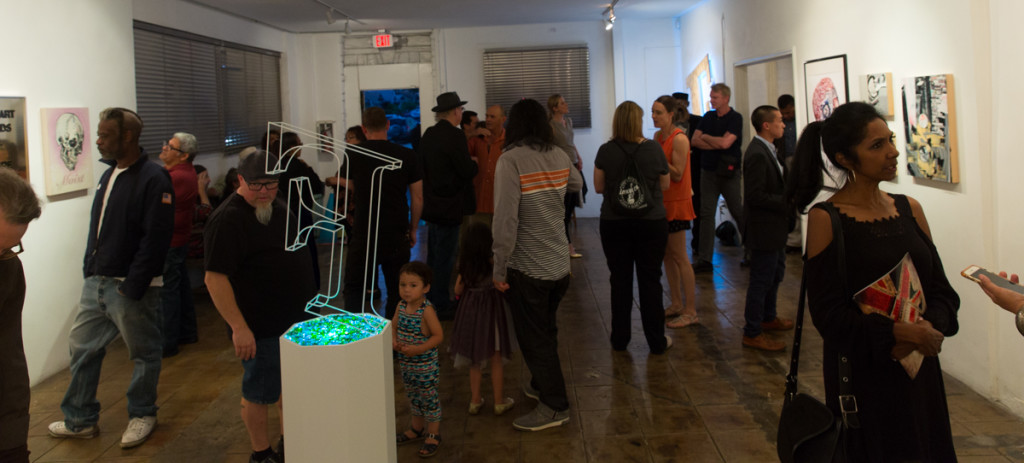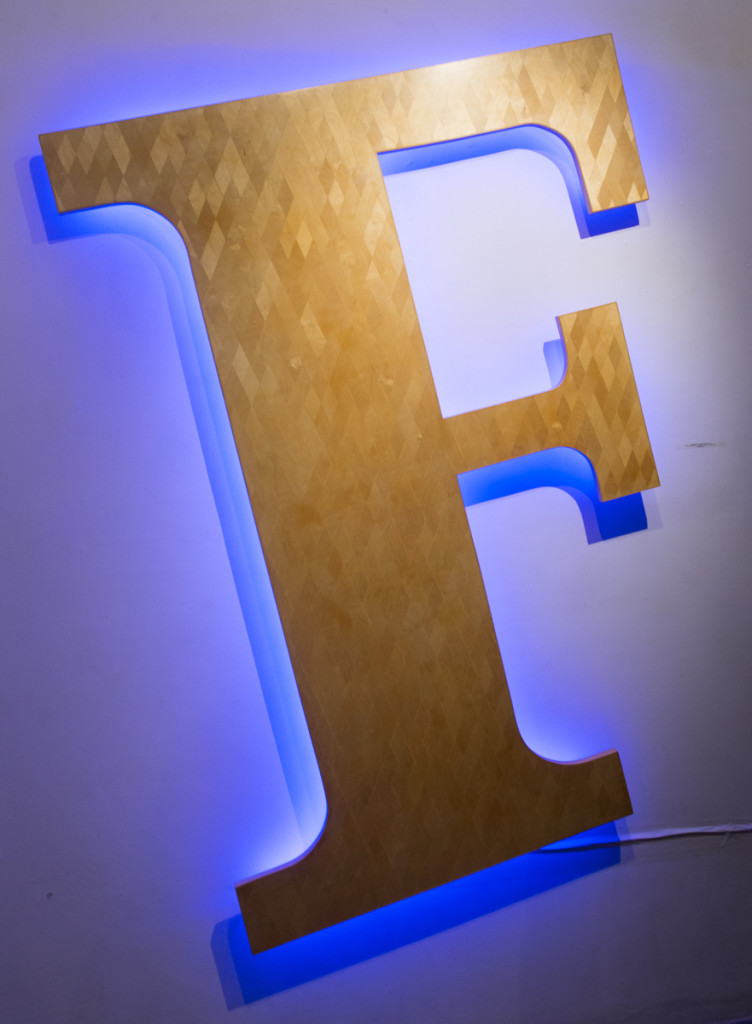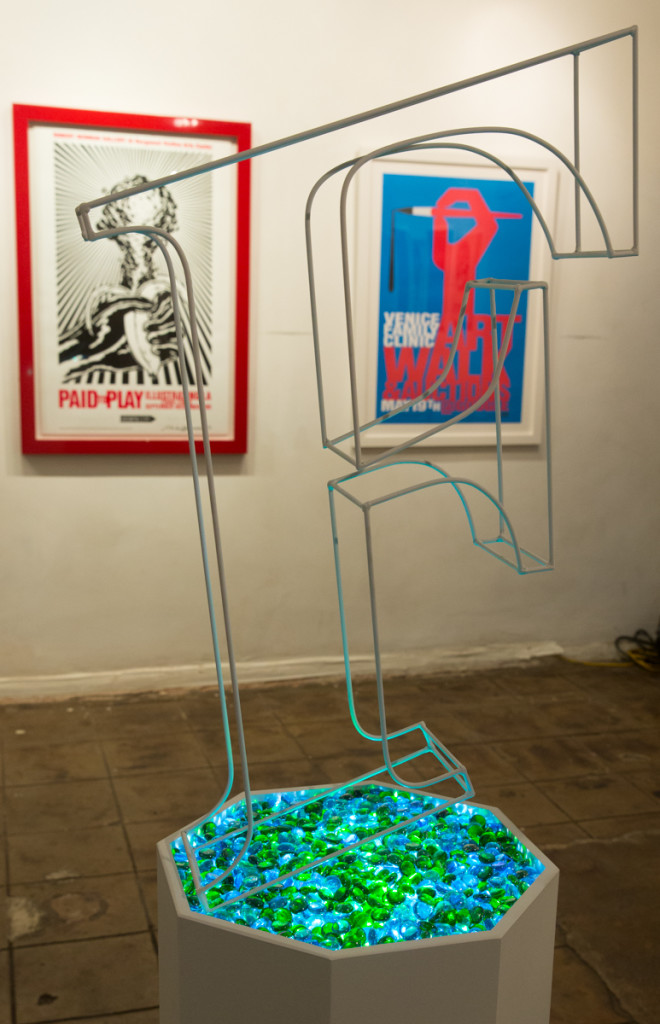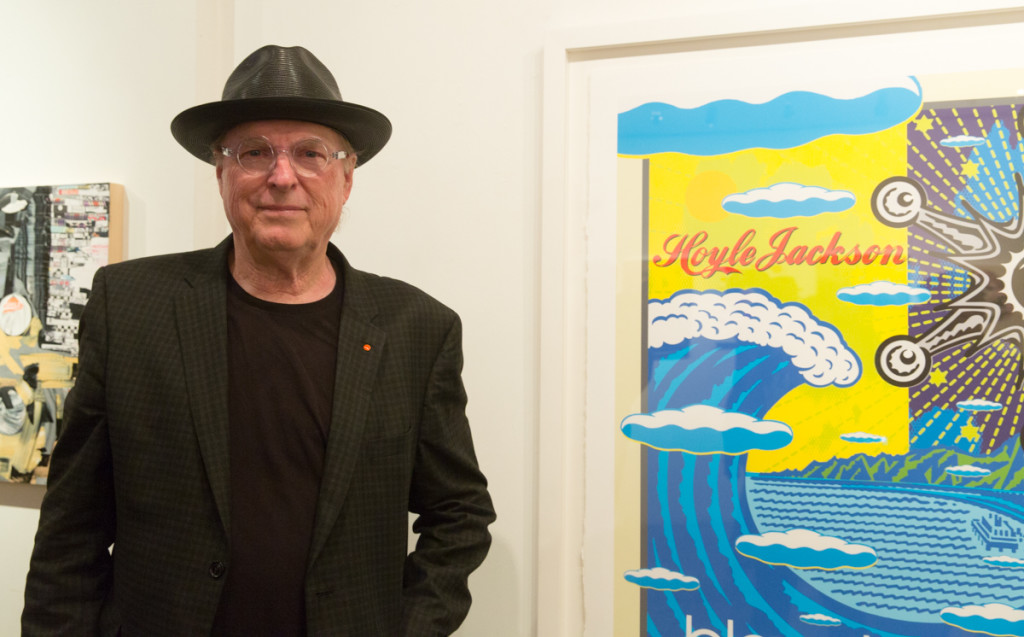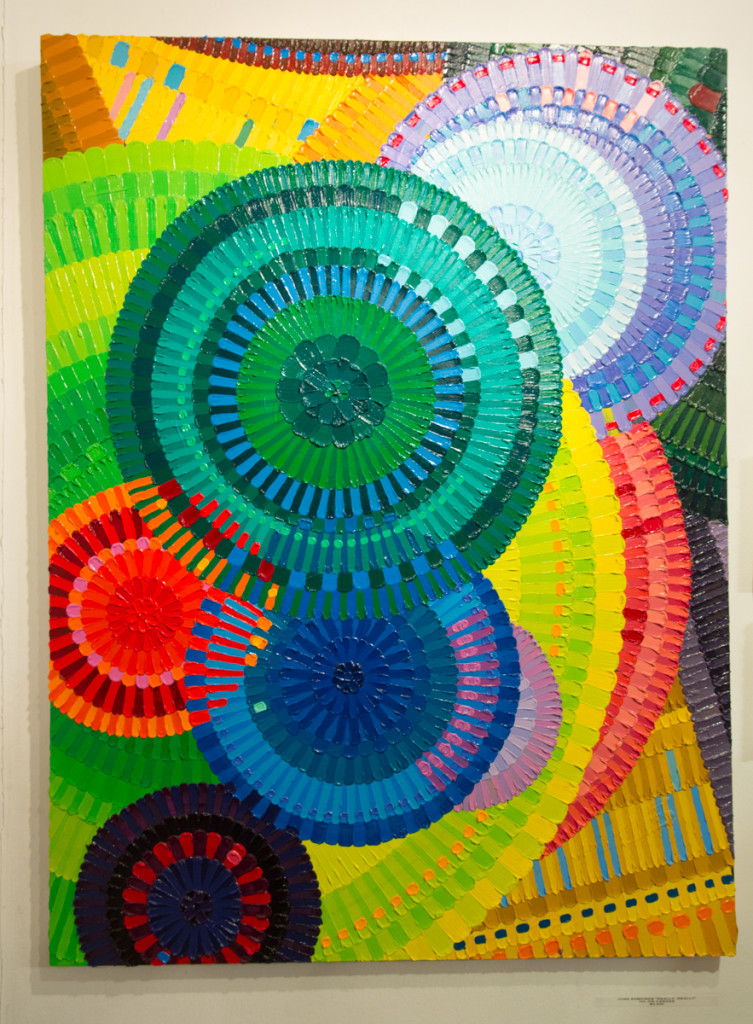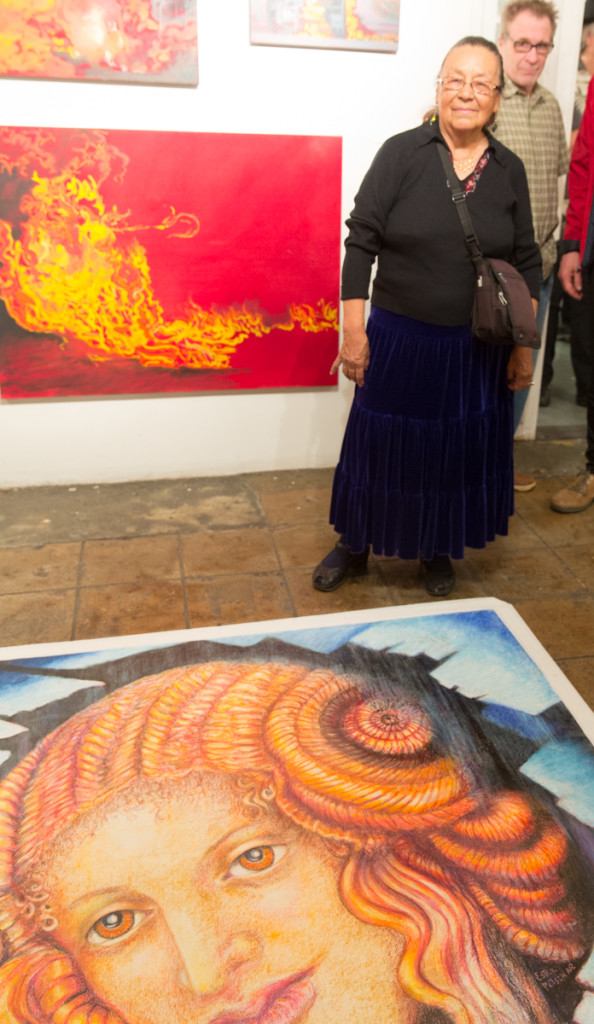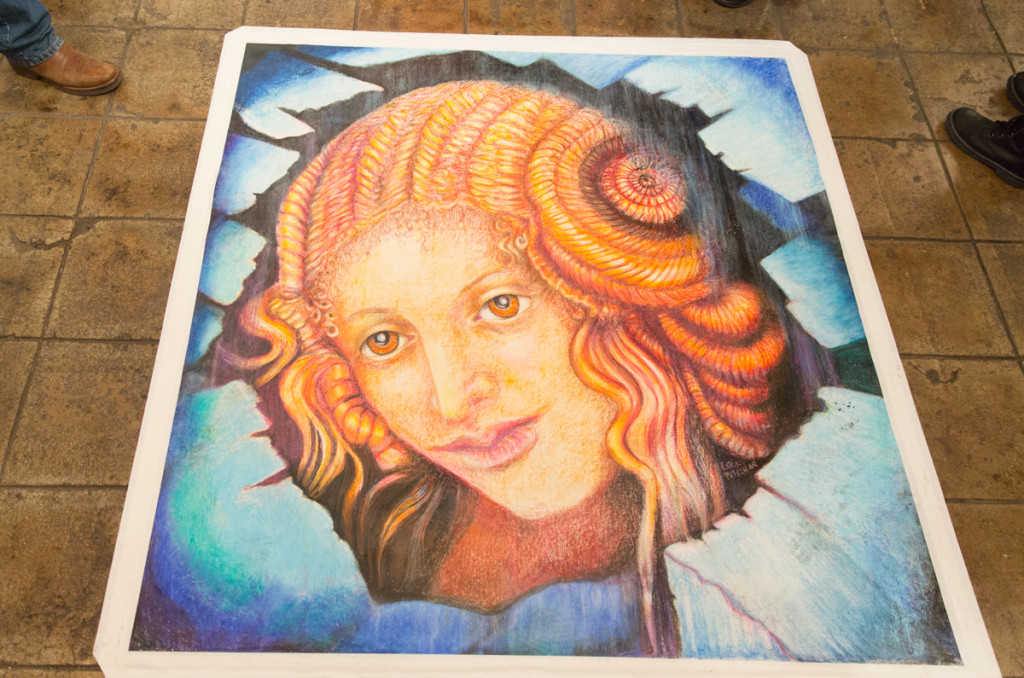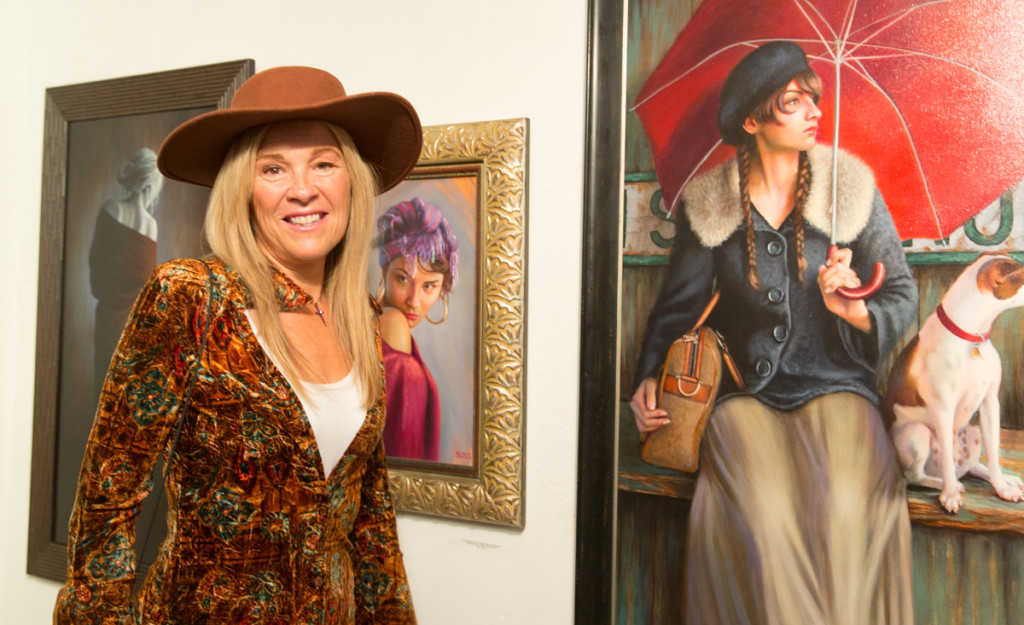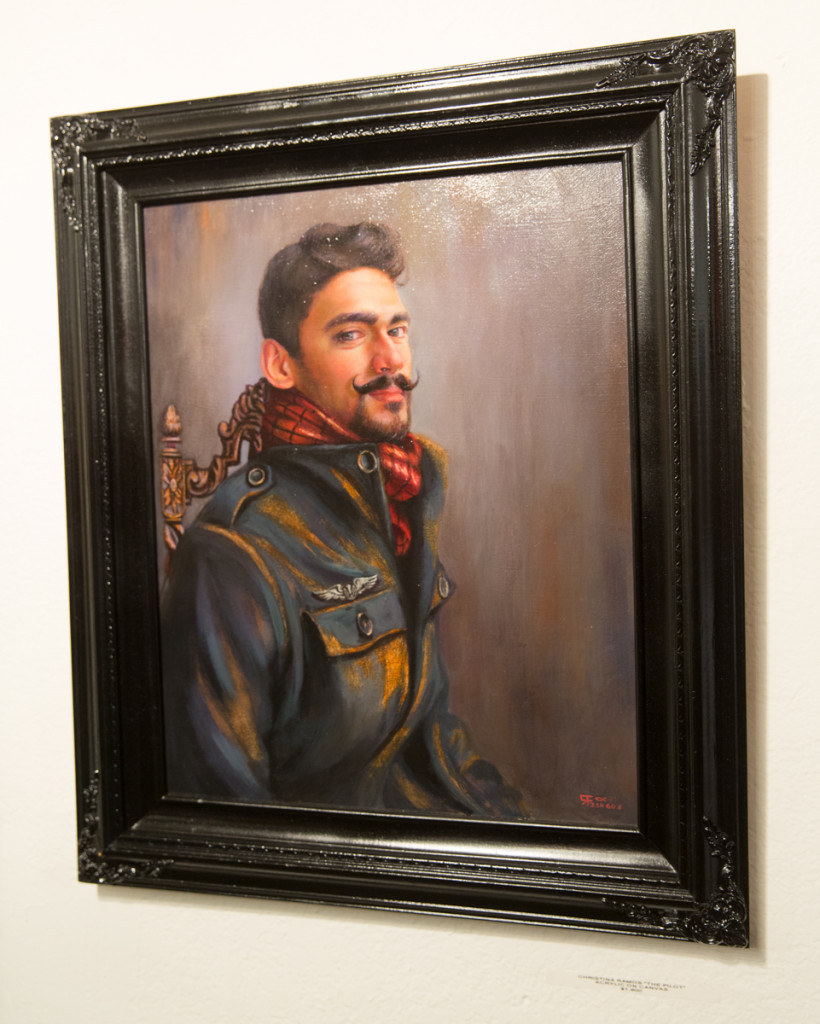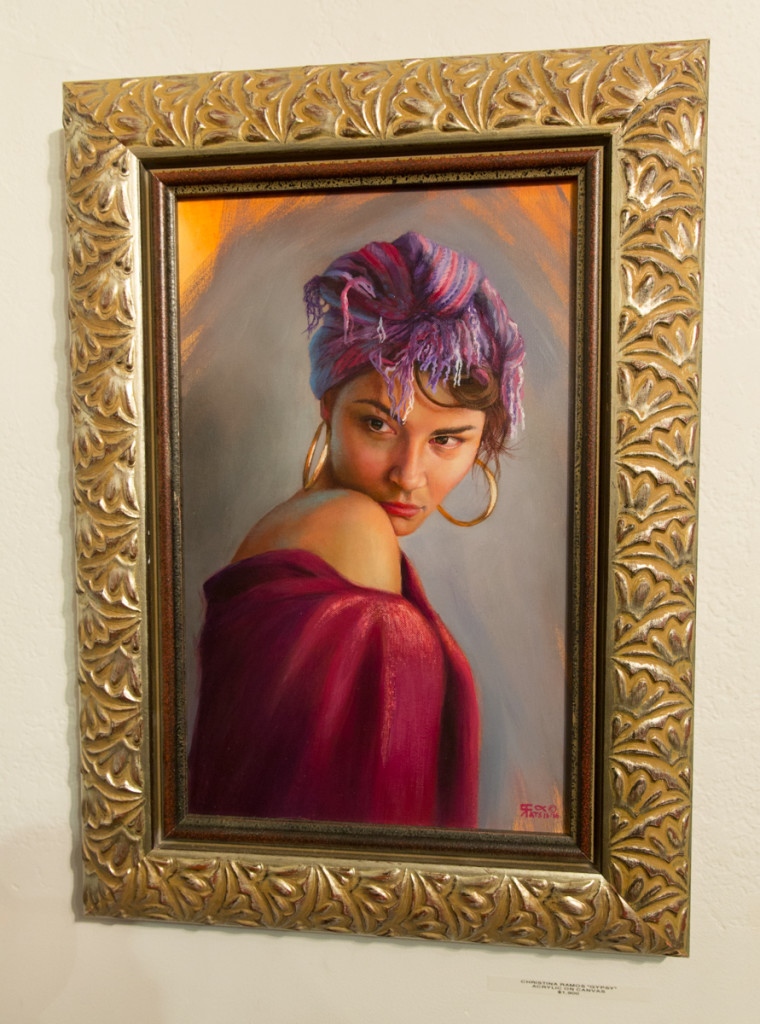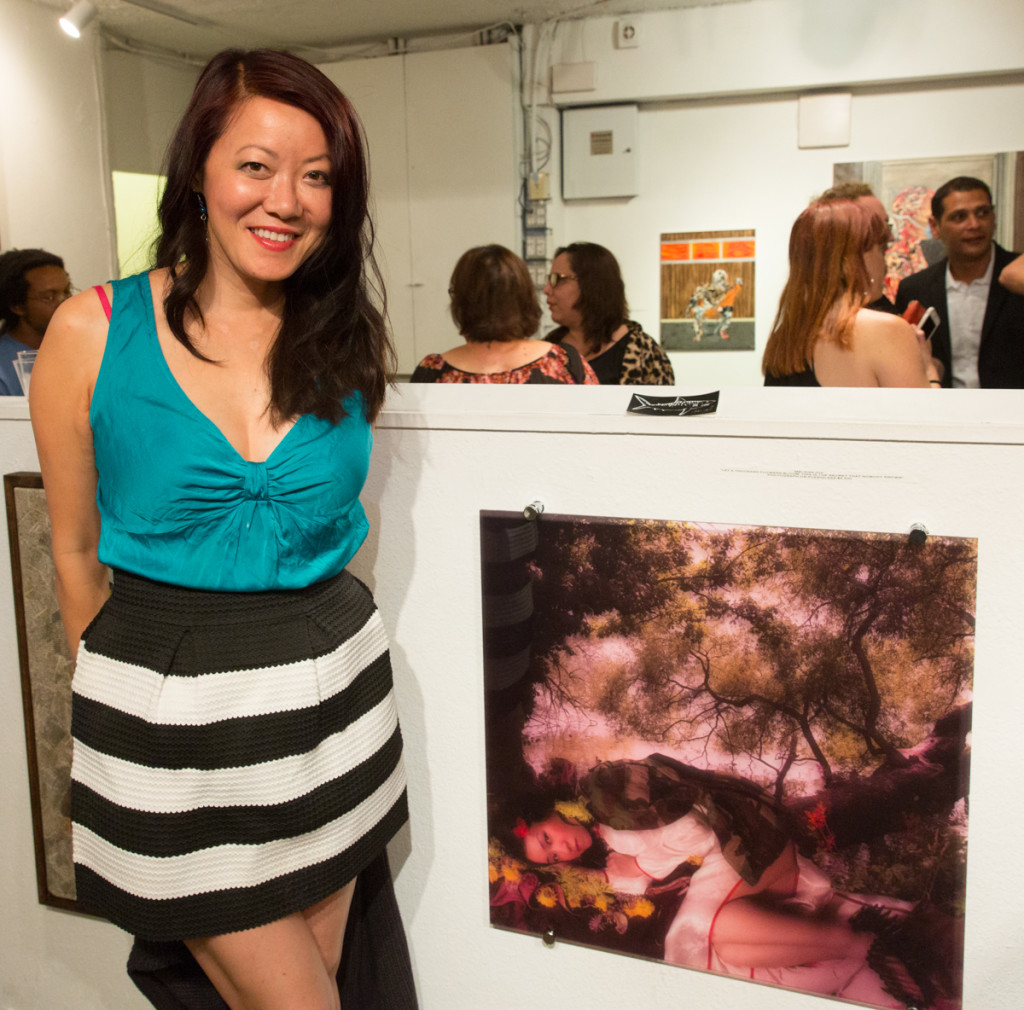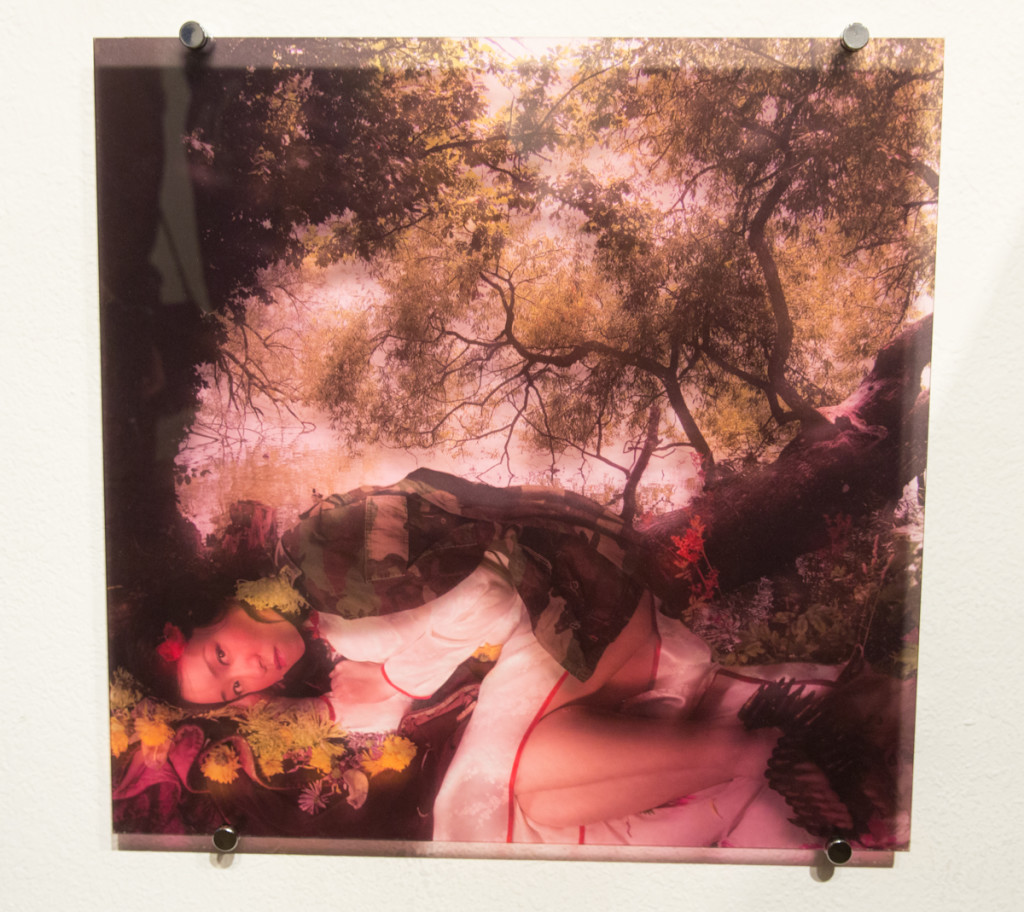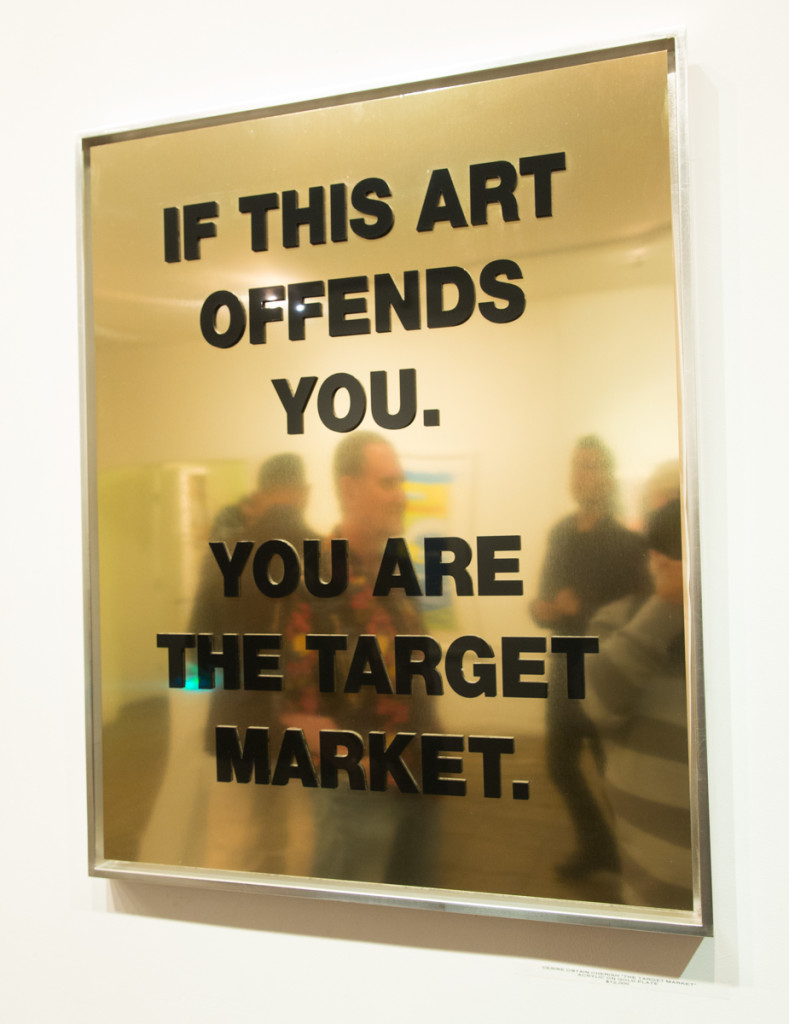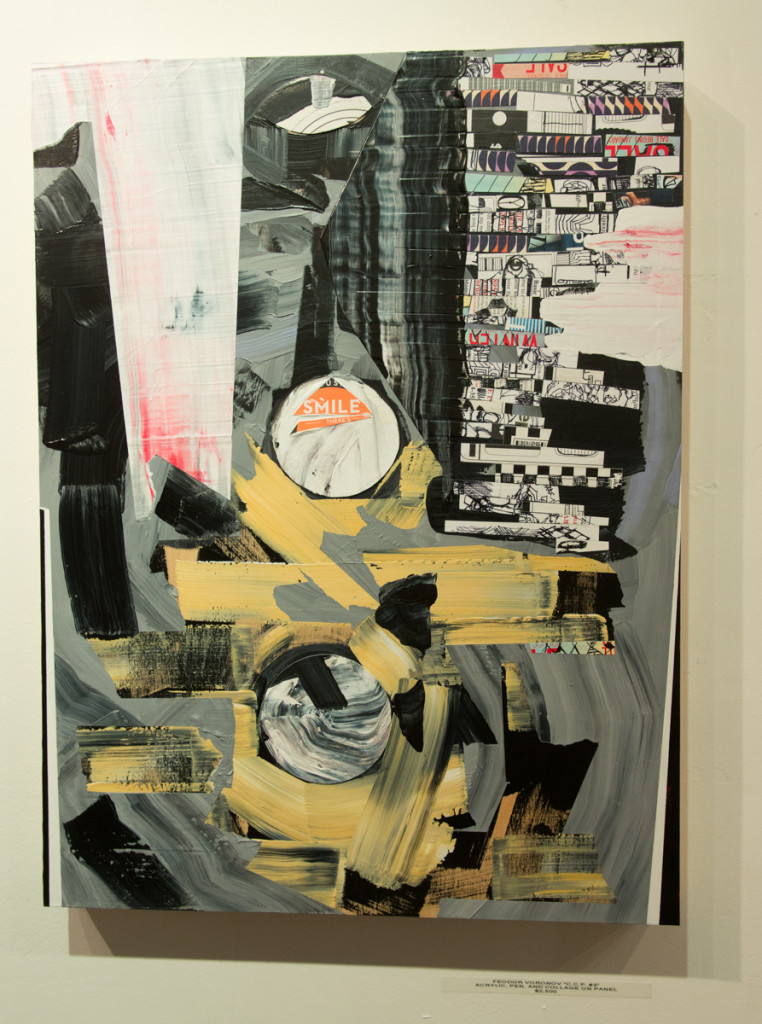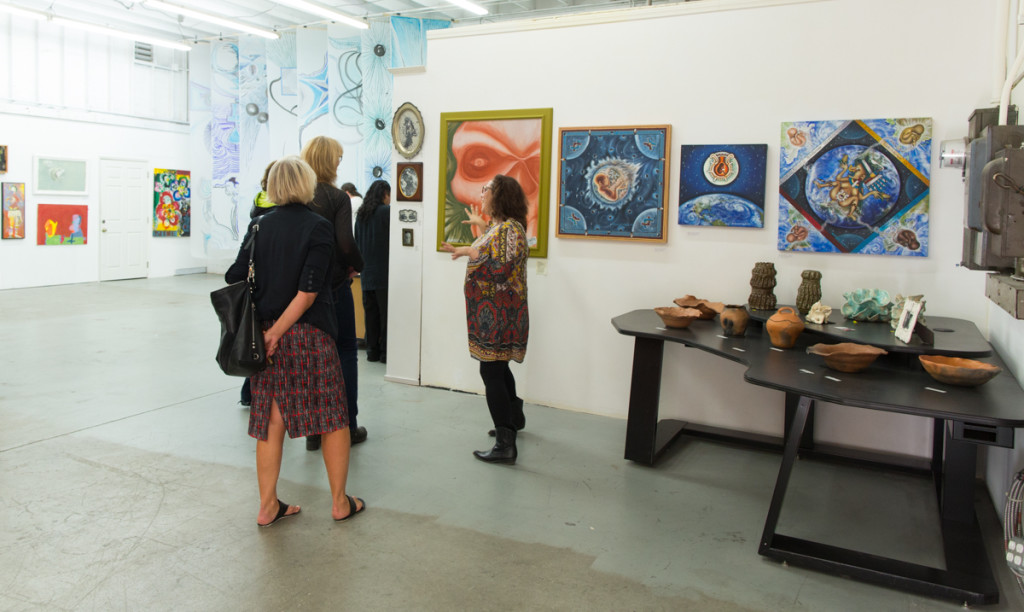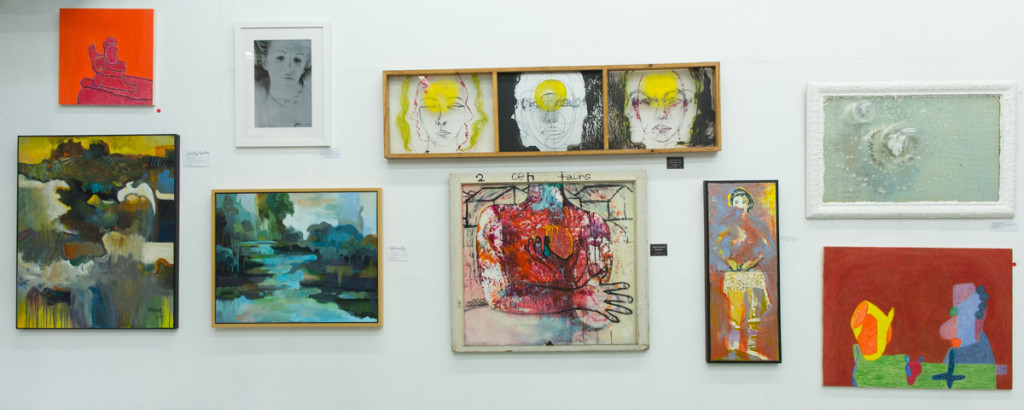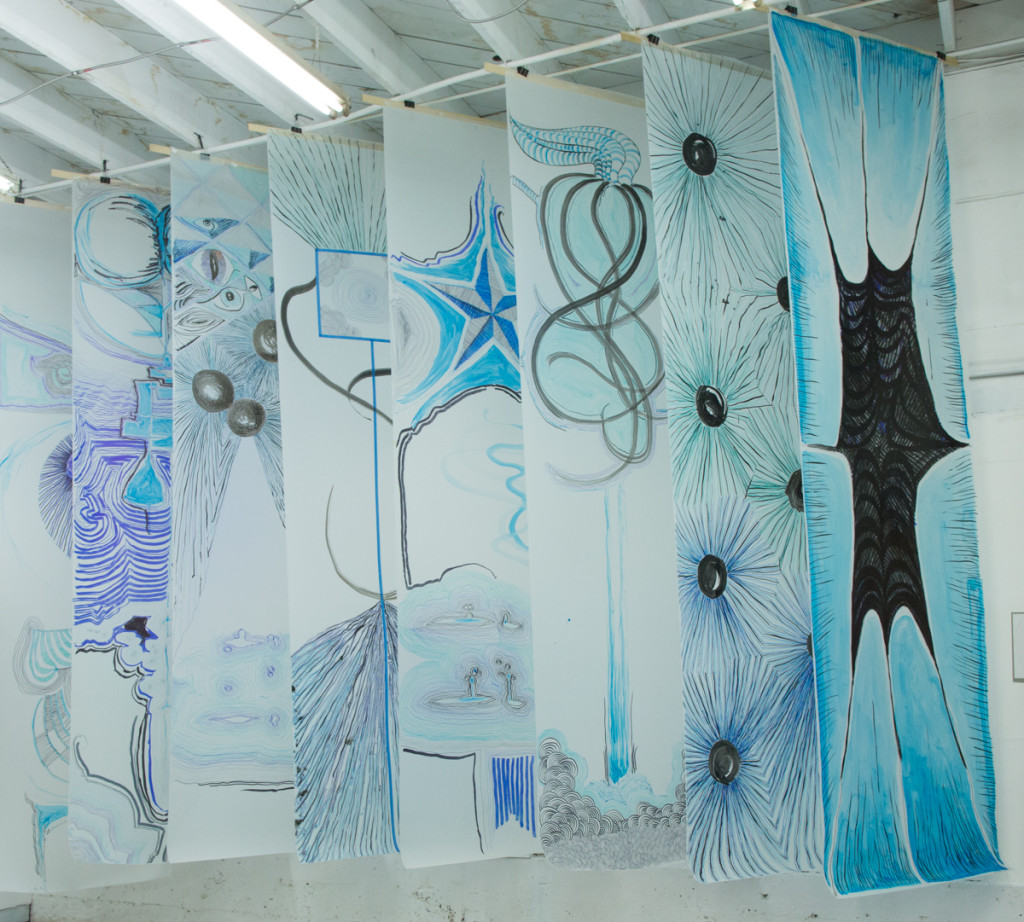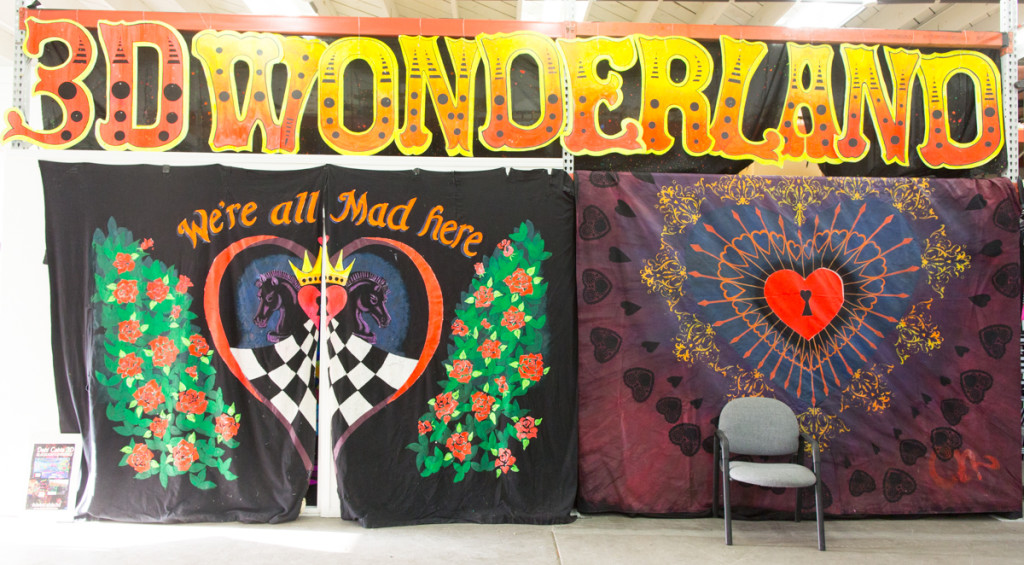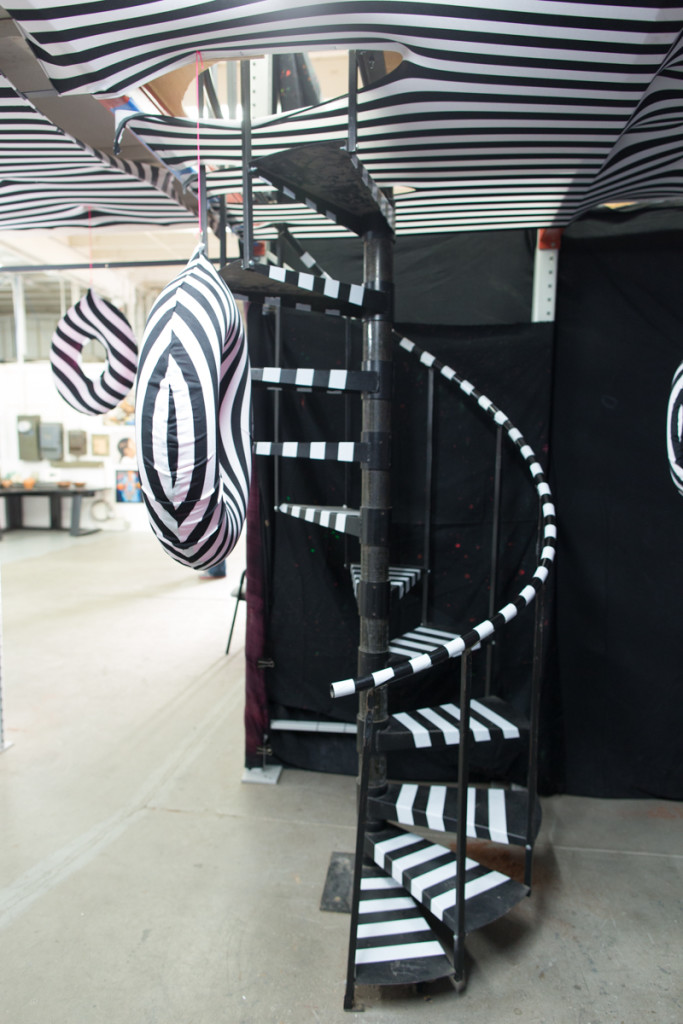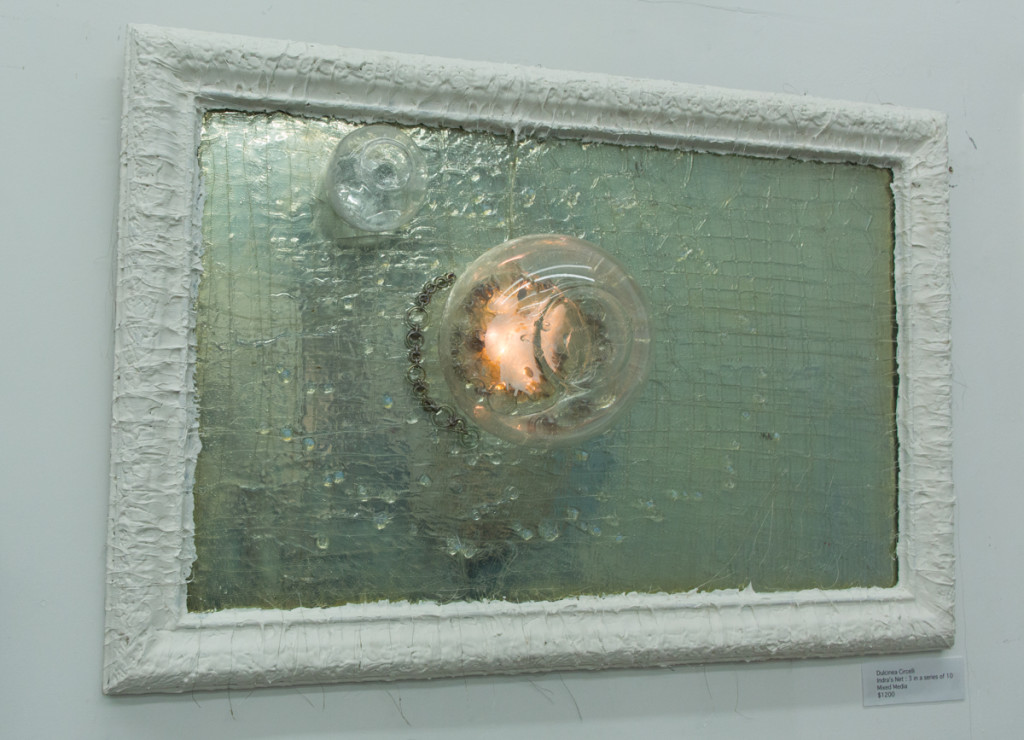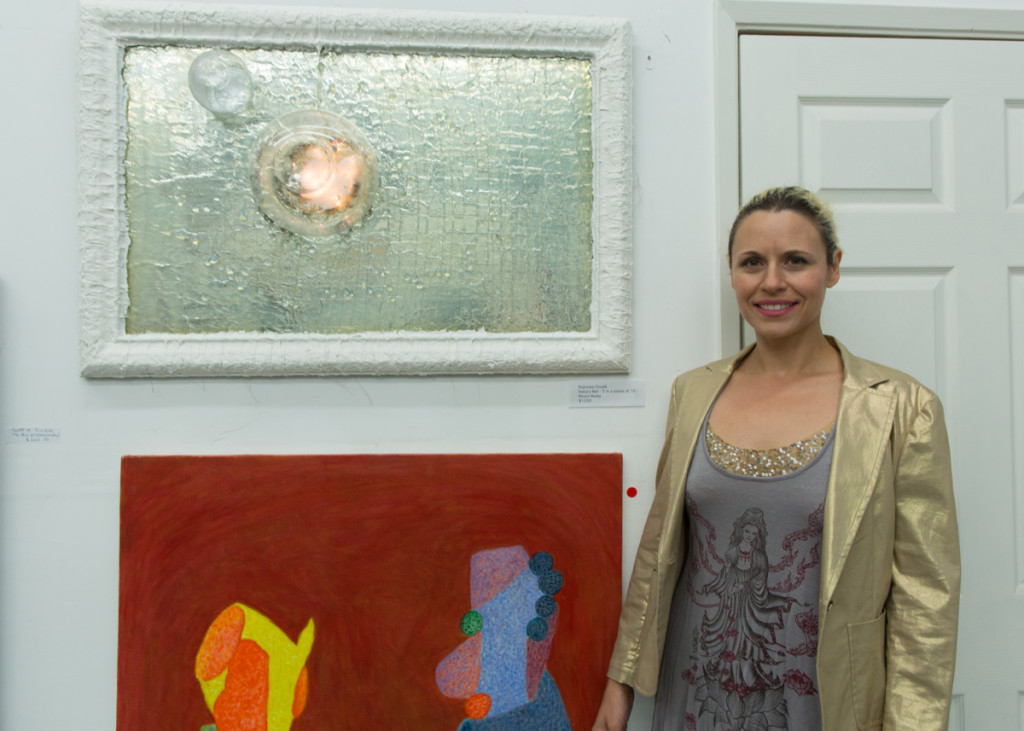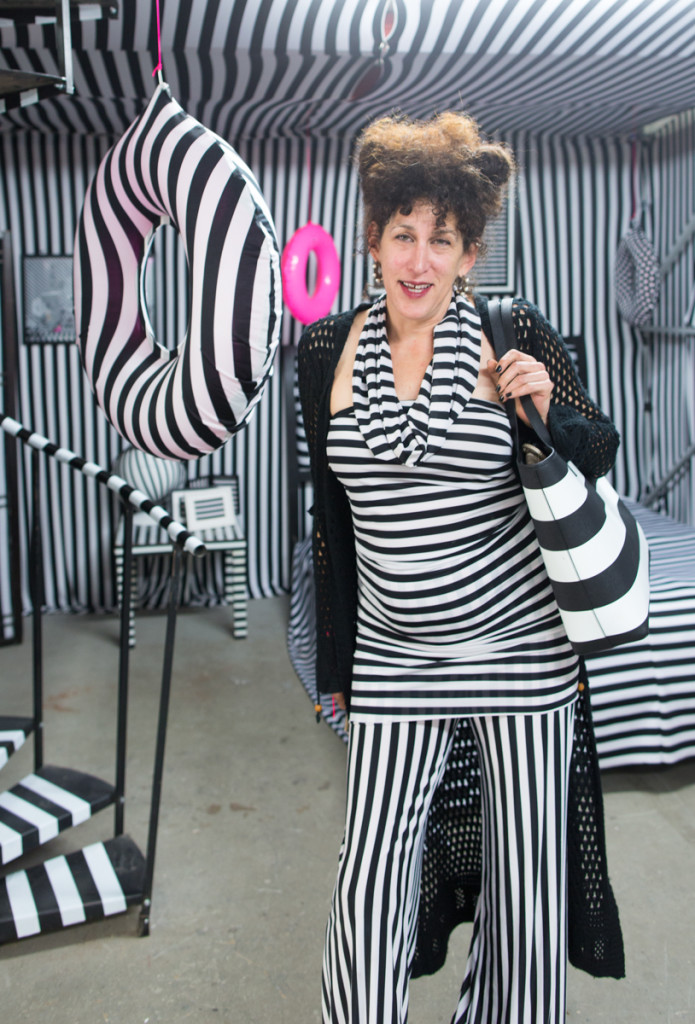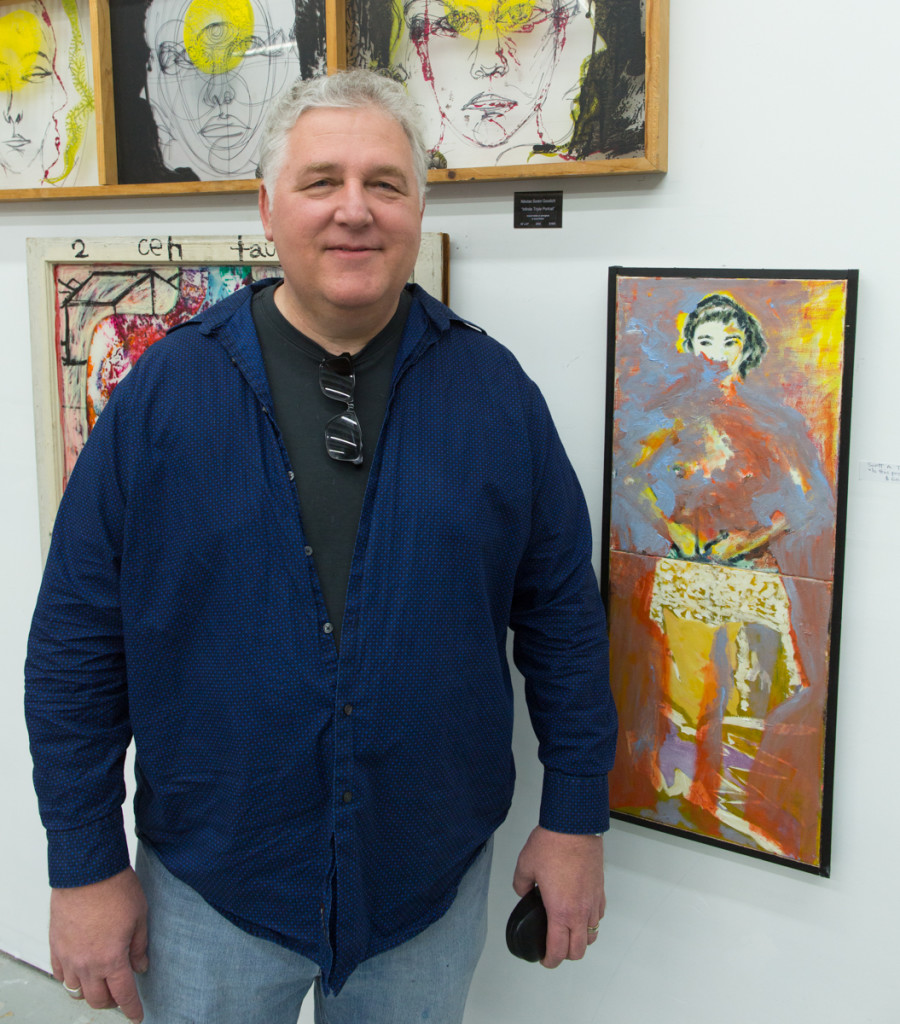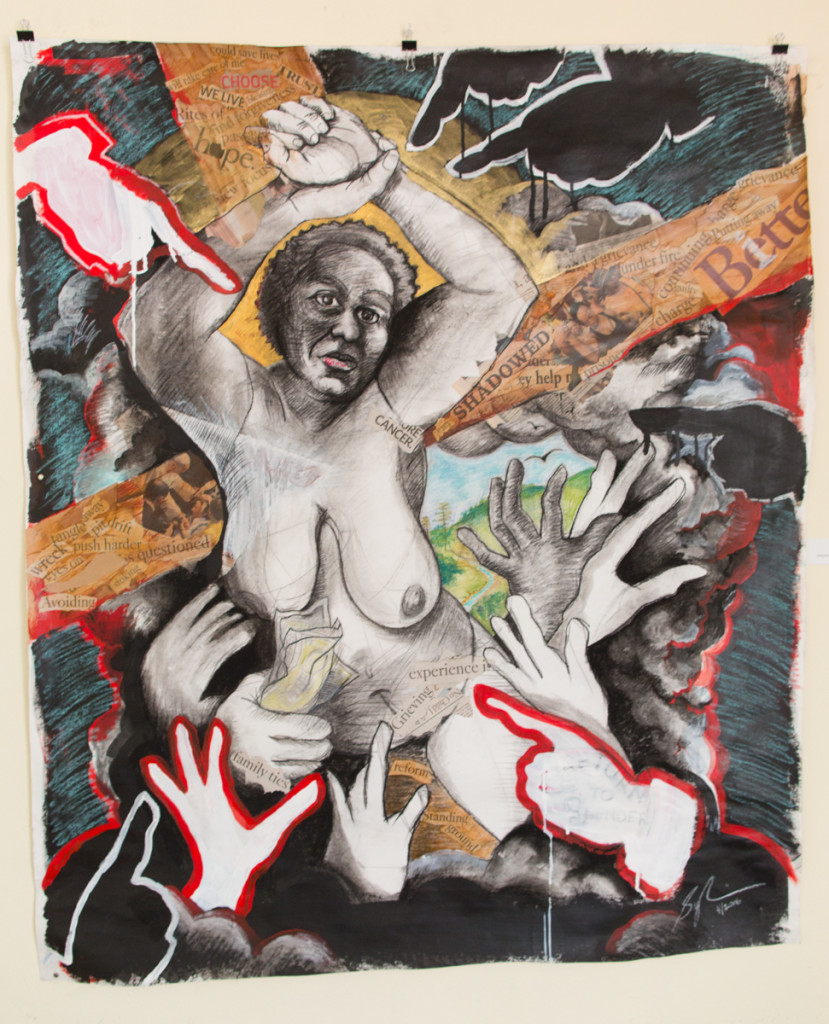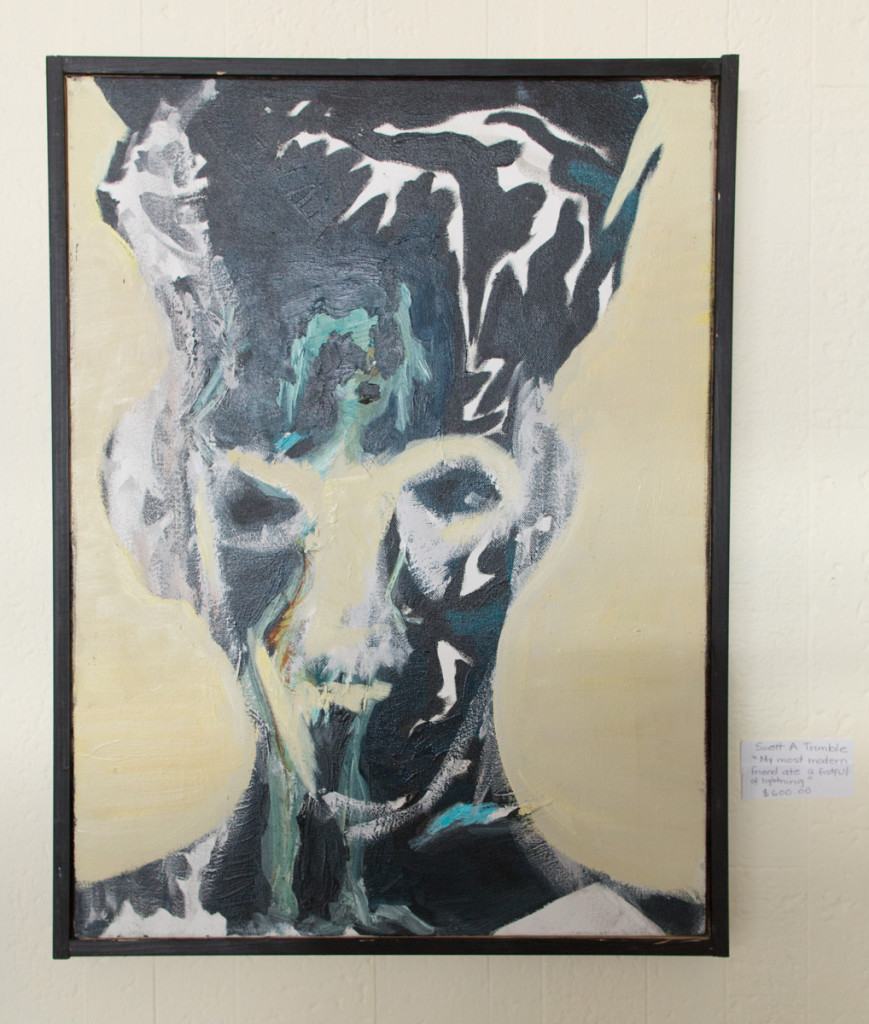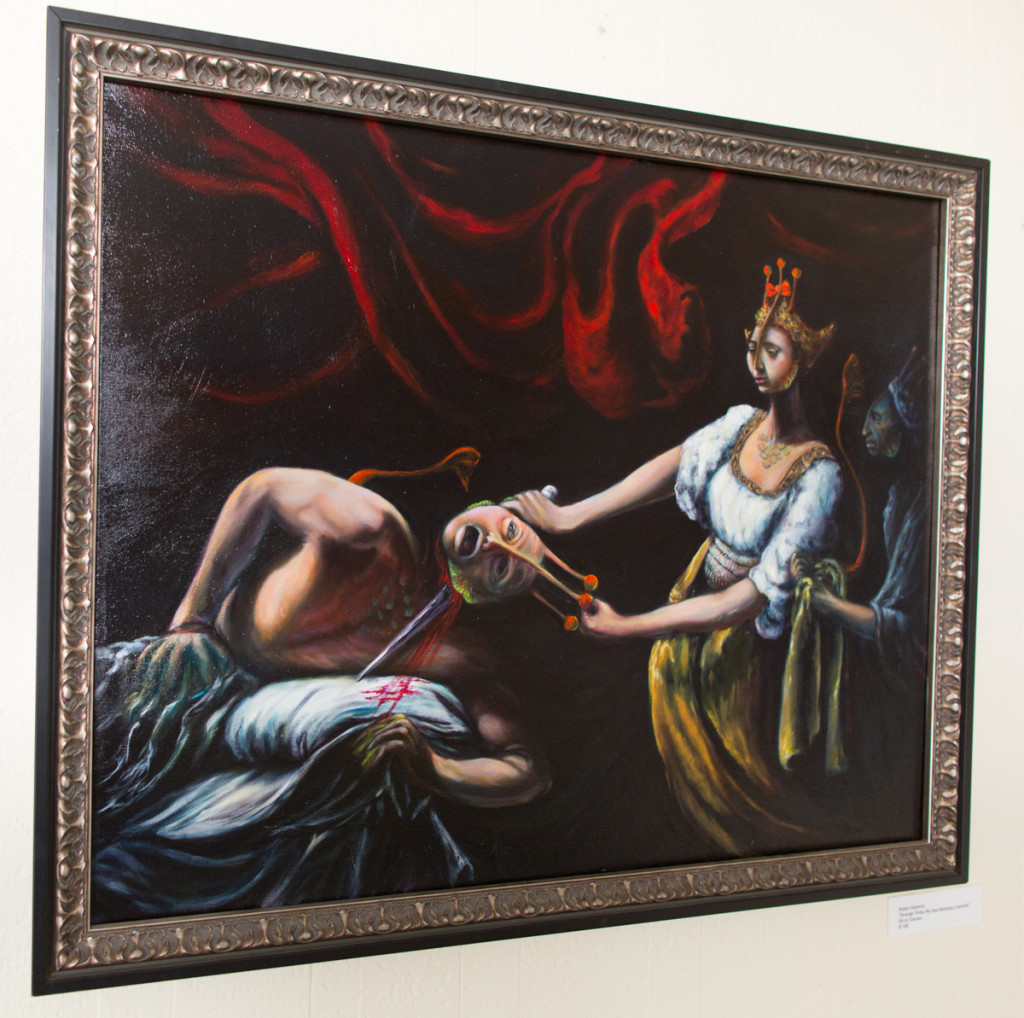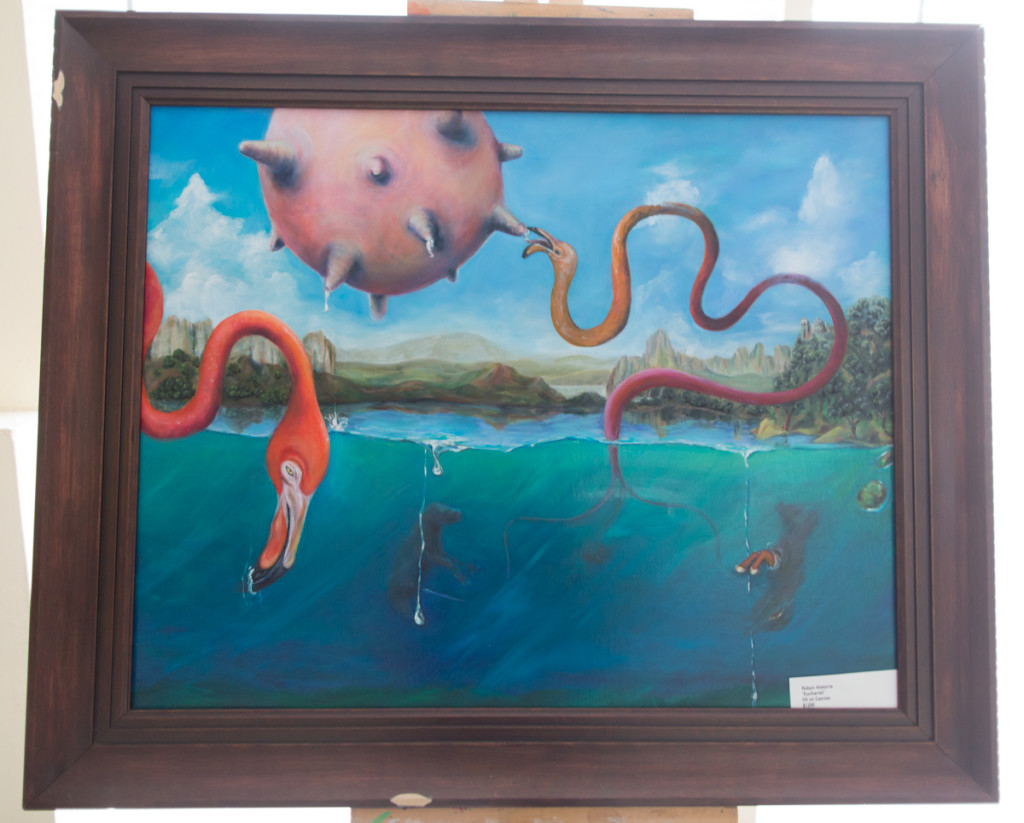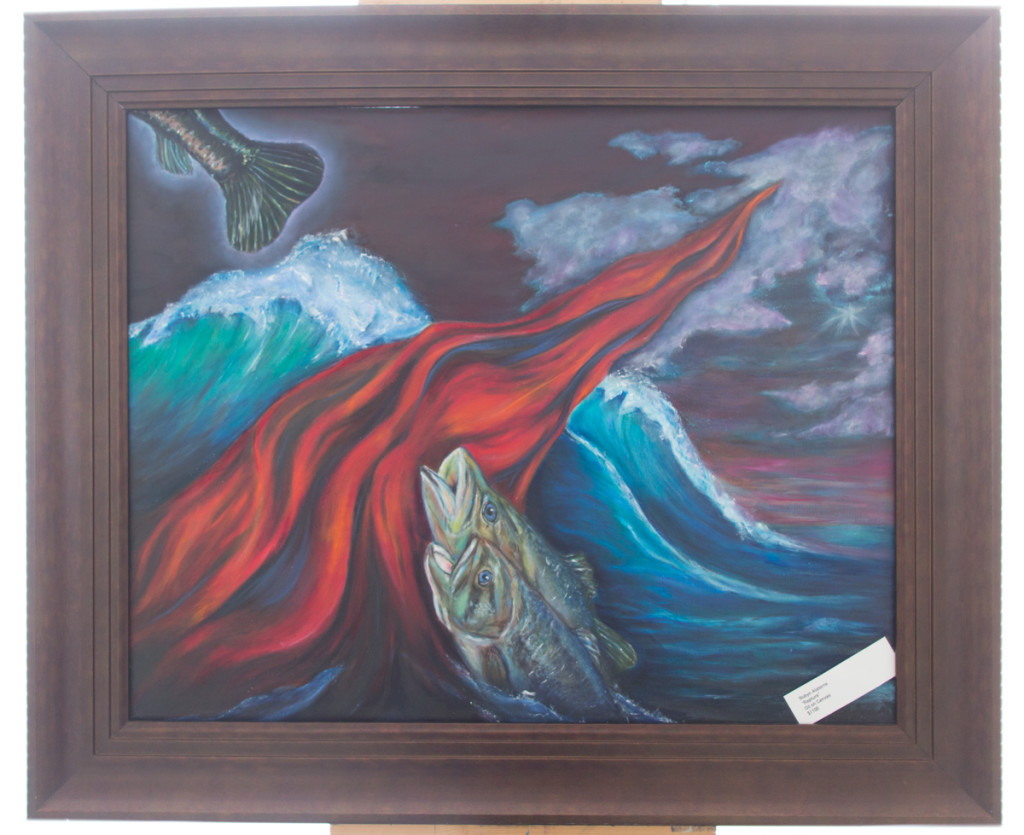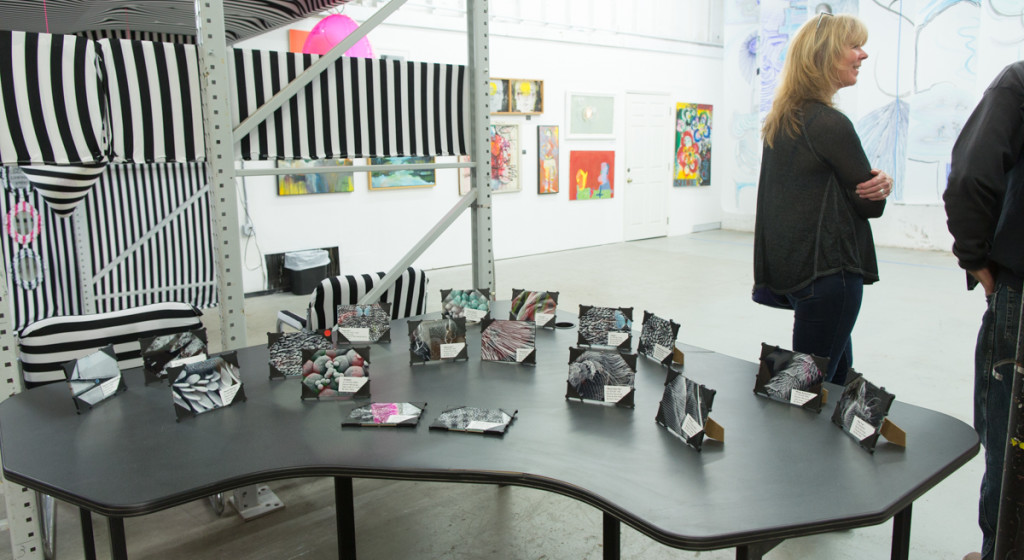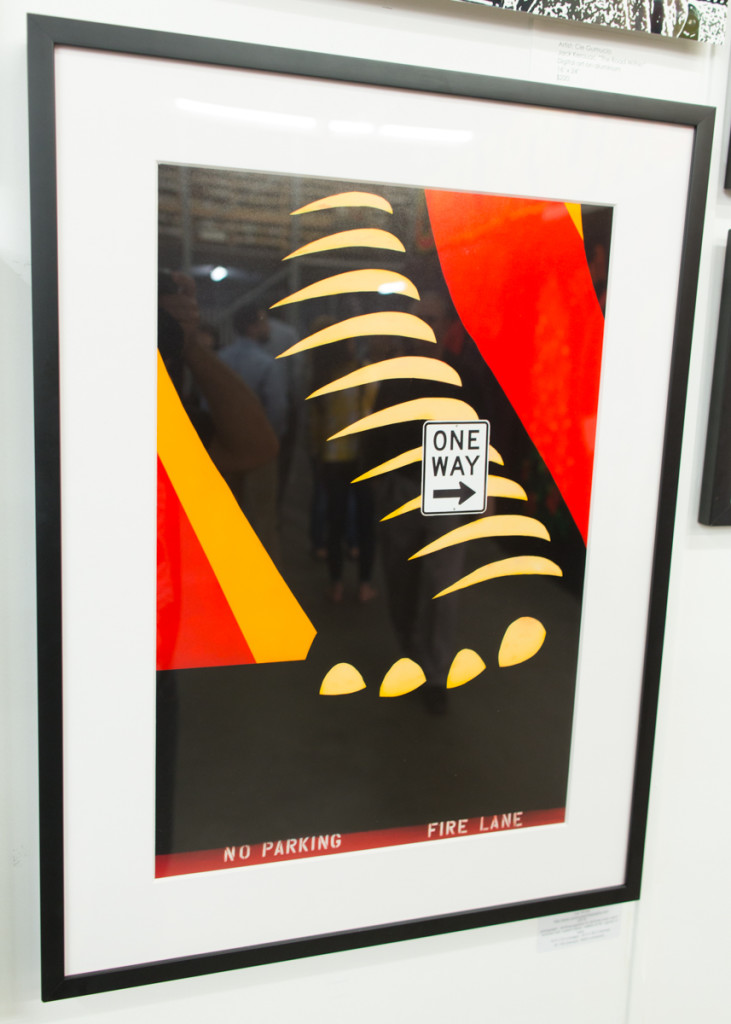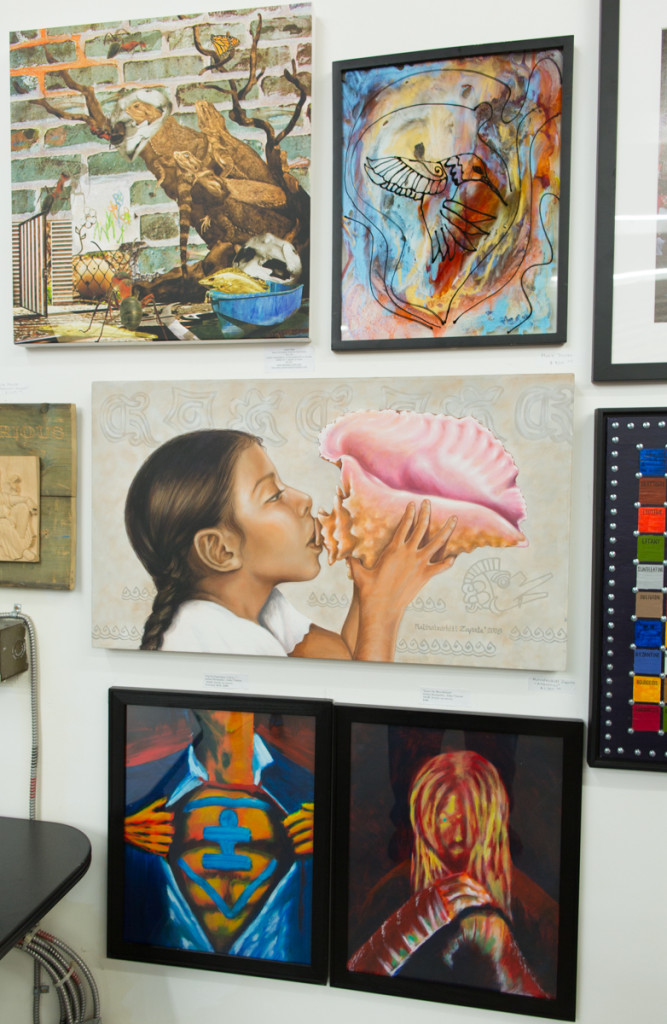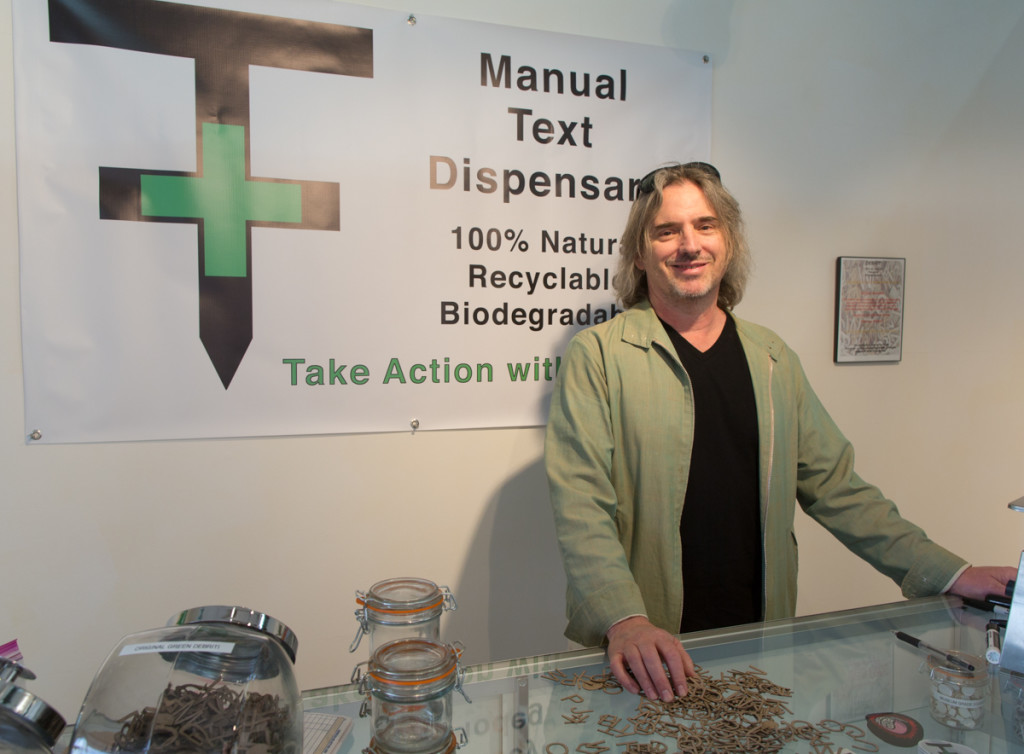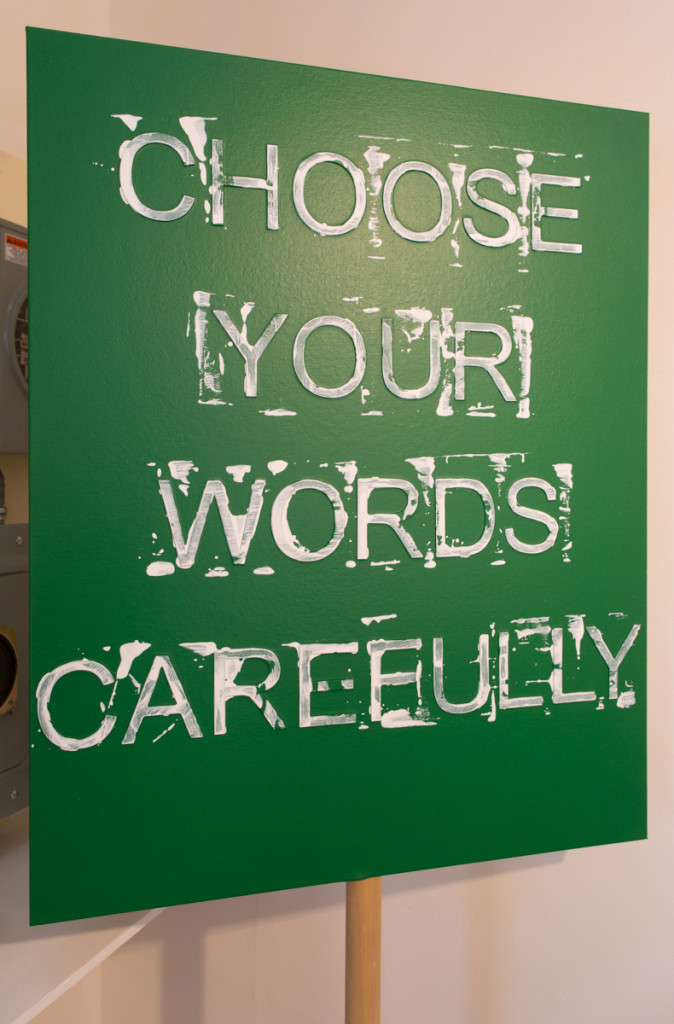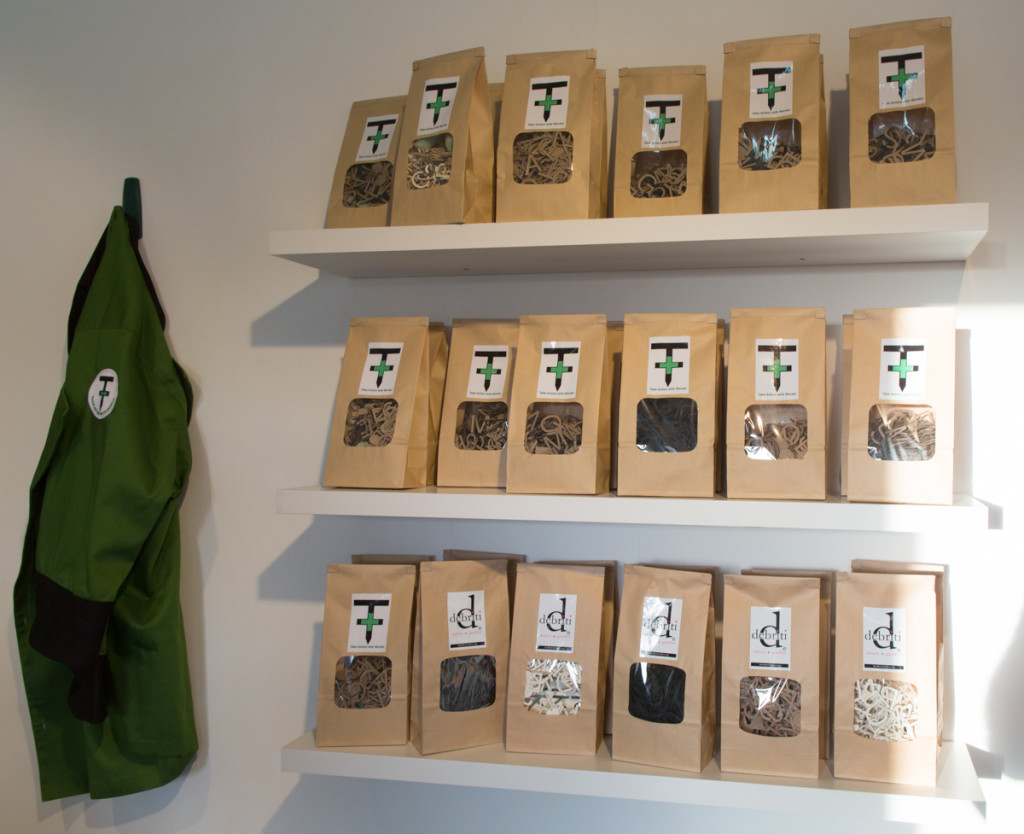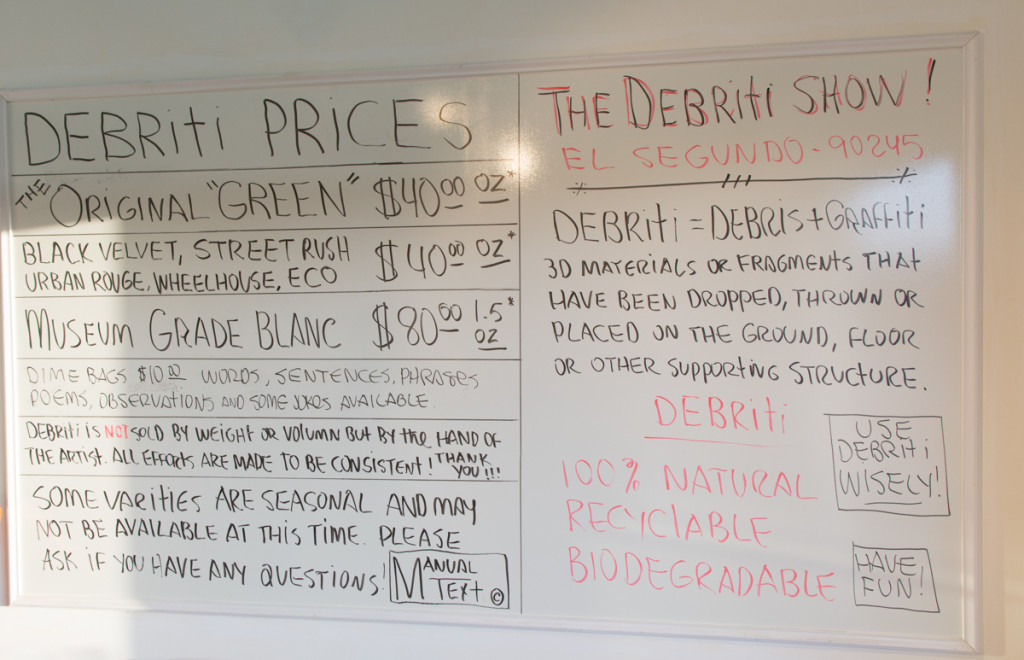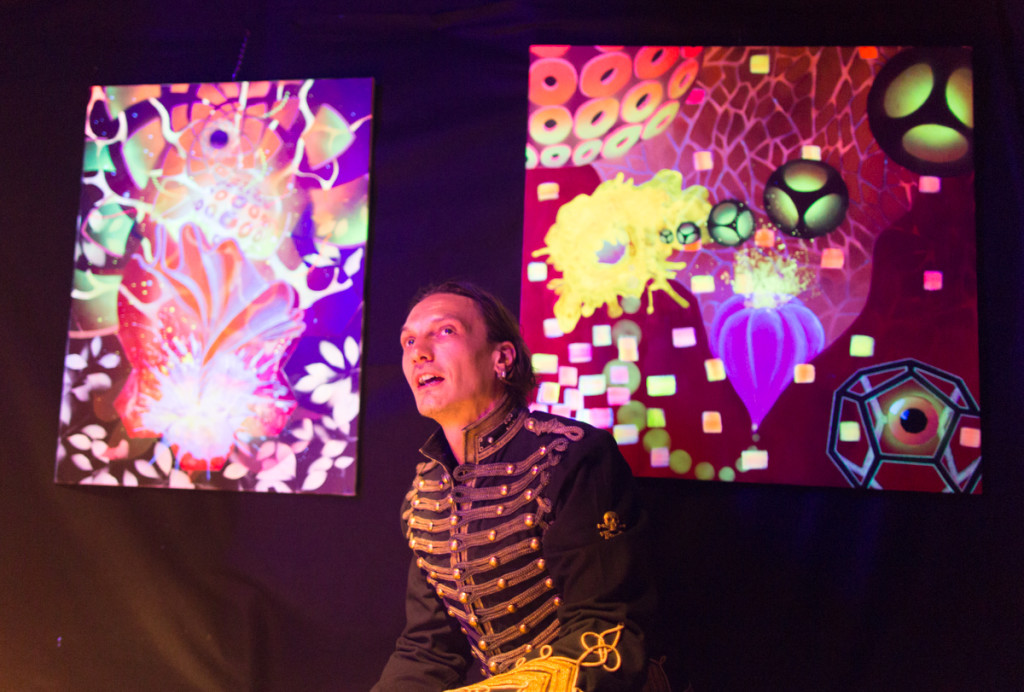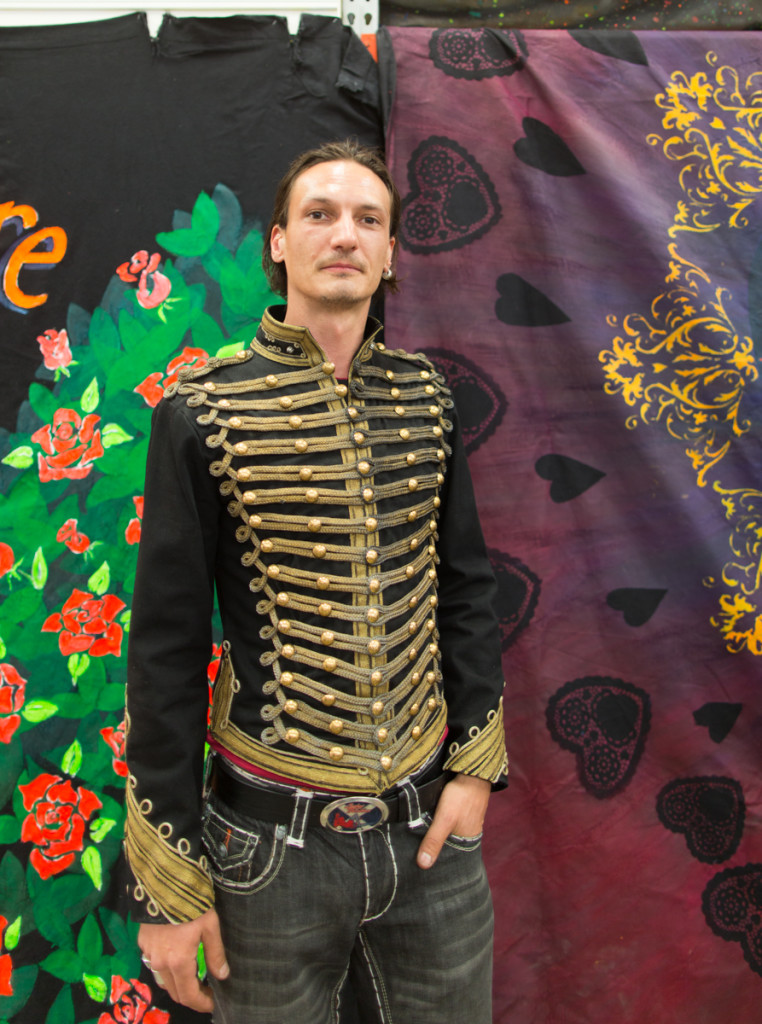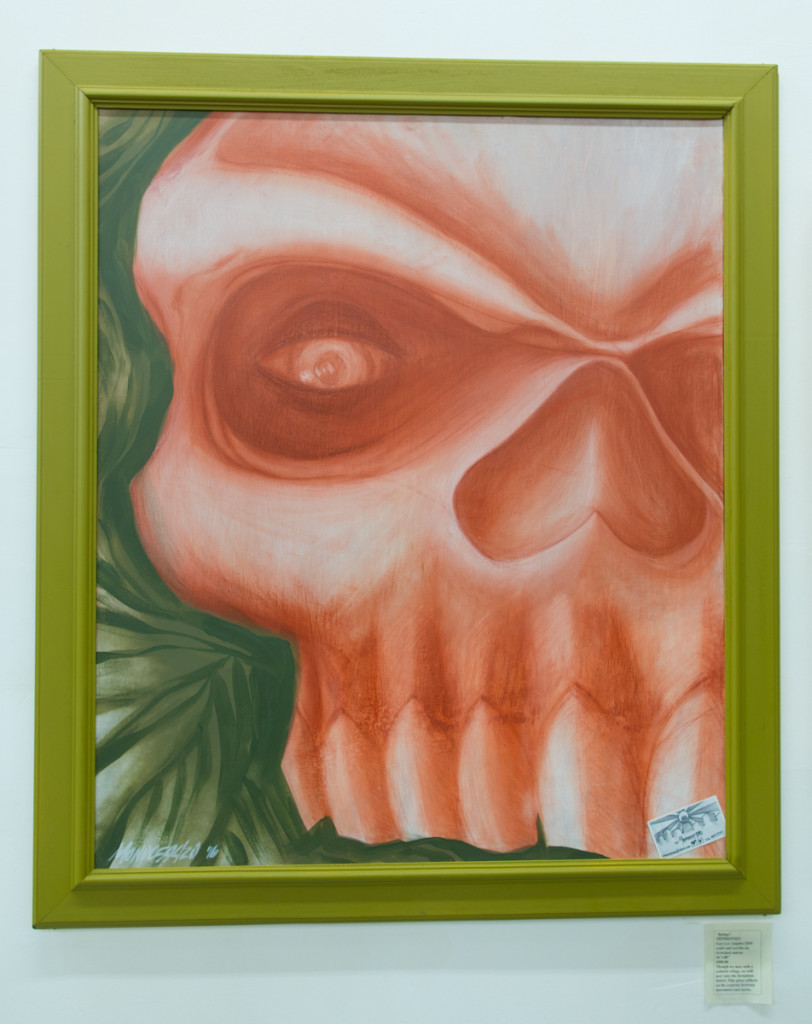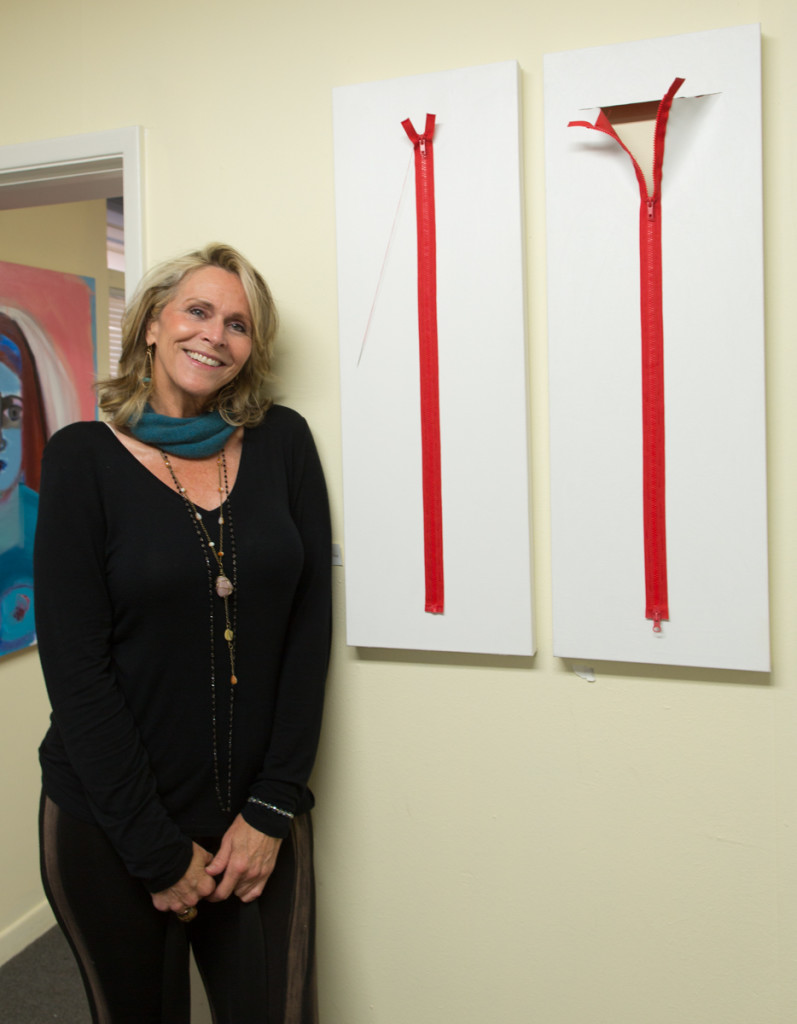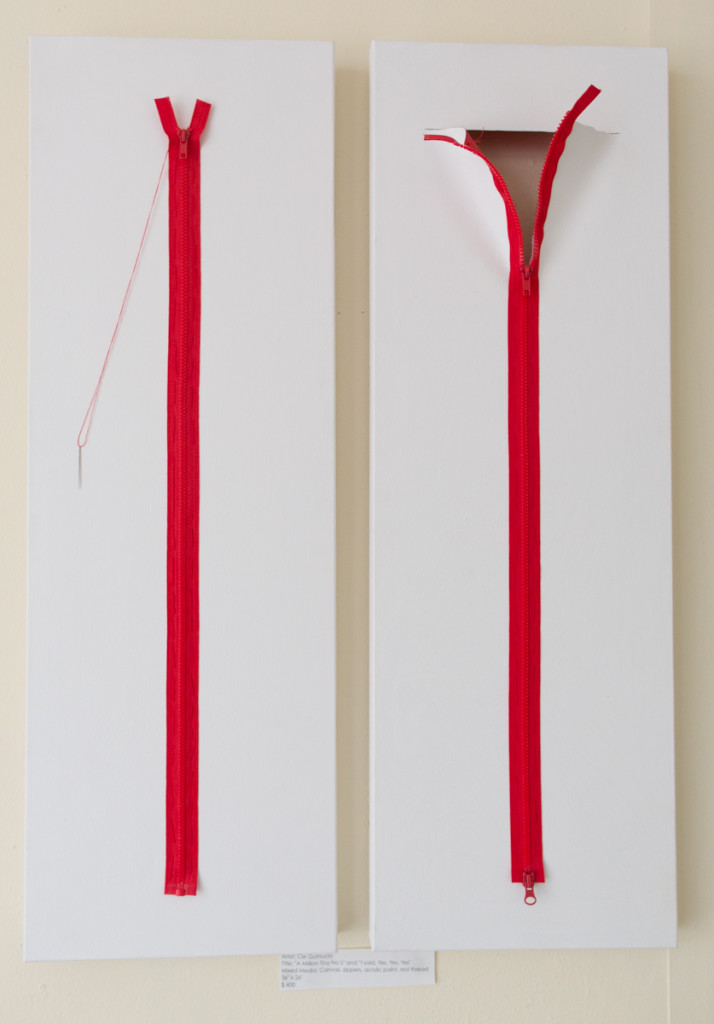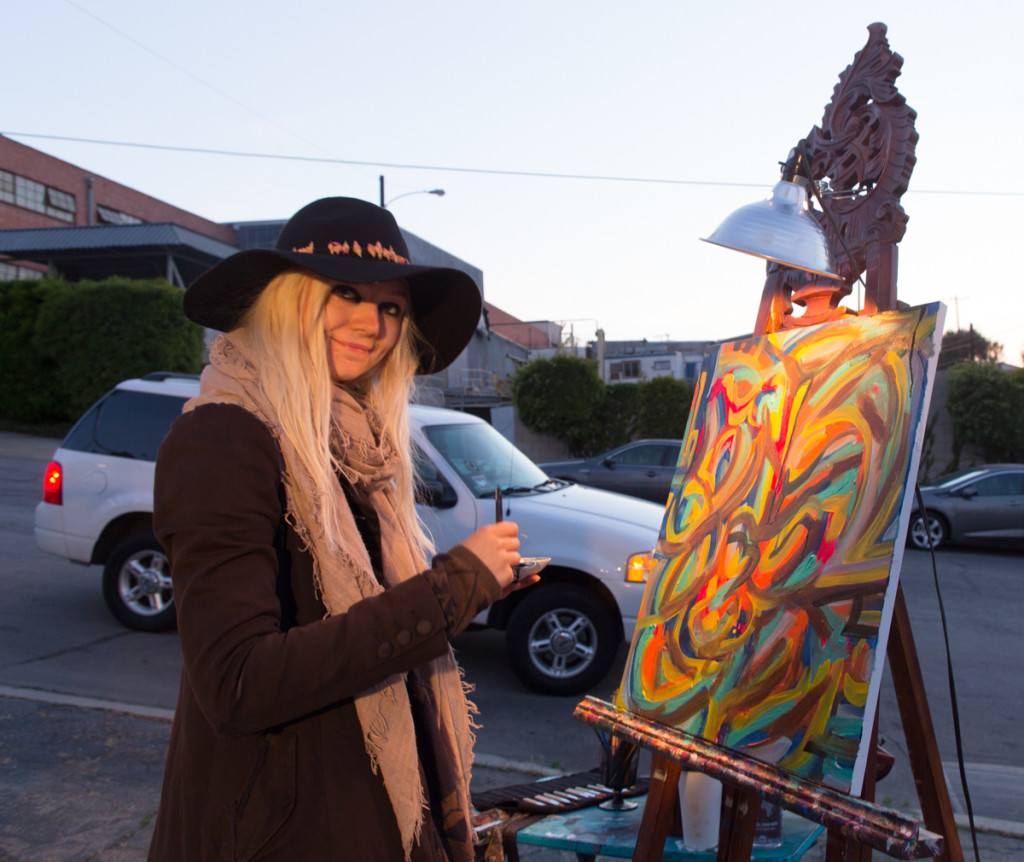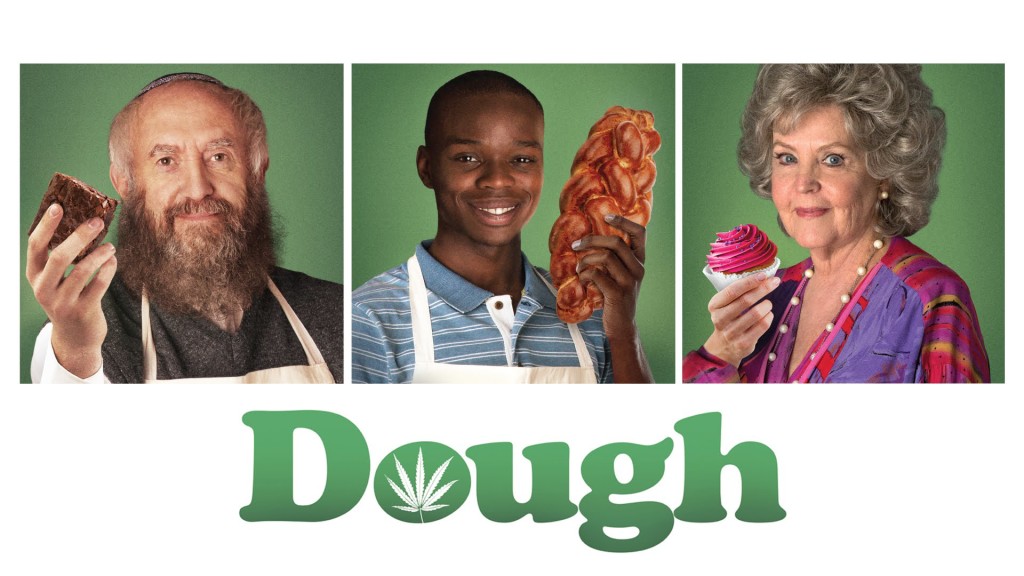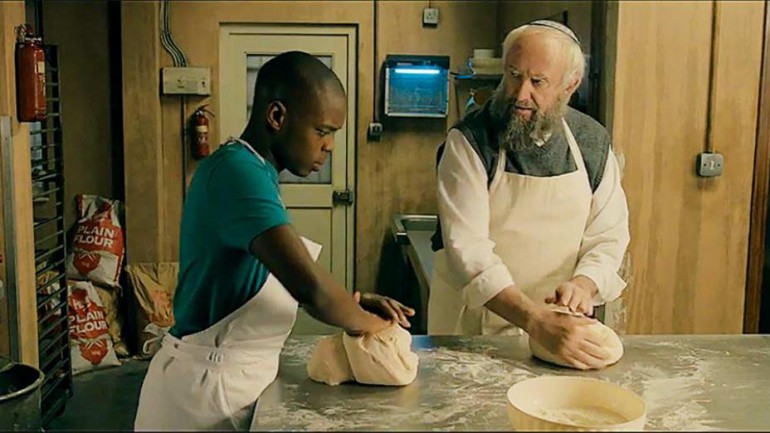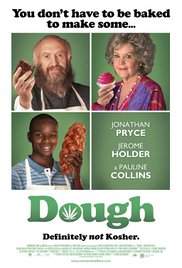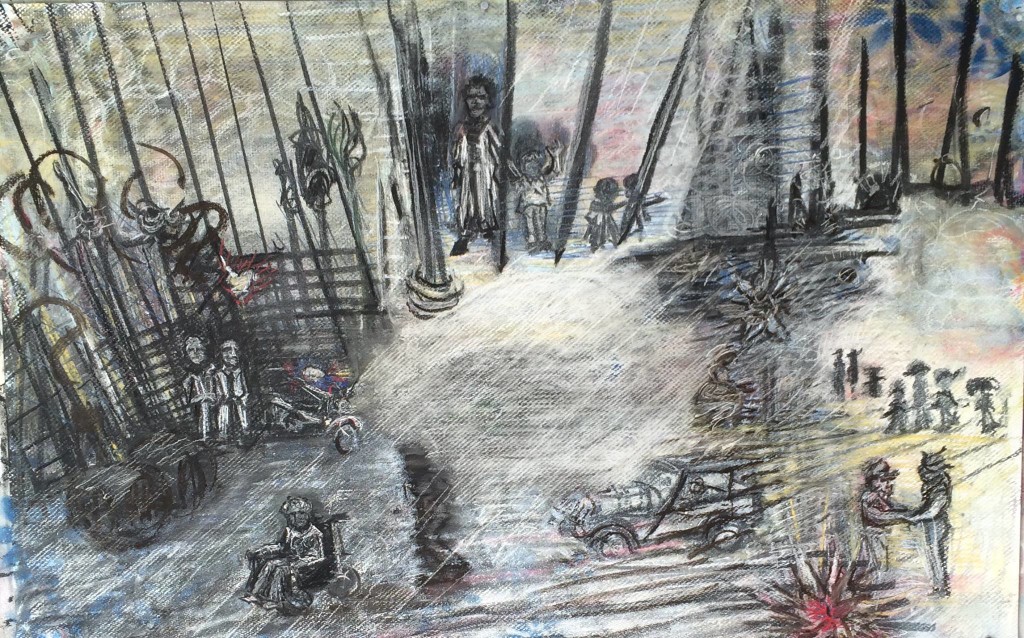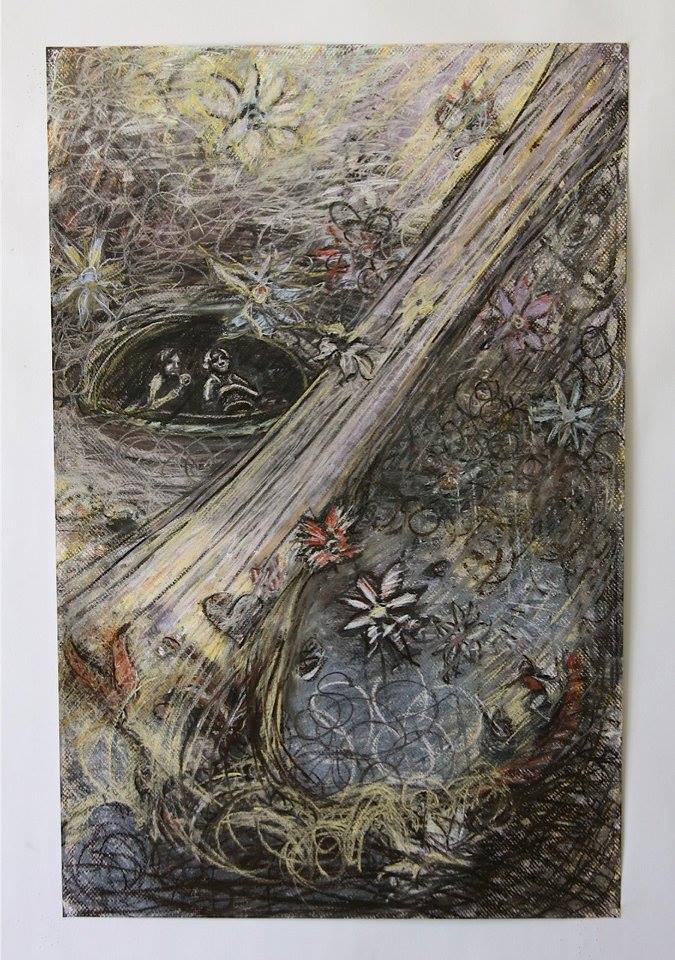Looking for a group show that’s got a kingdom’s worth of artistic treasures? Then hasten lords and ladies to Royal Curation at Gabba Gallery through May 14th, where four such shows are on display.
Curators Jim Daichendt, “Word;” Mat Gleason, “Blood on the Track Lights;” Isabel Rojas-Williams, “I am More;” and Cindy Schwarzstein, “/Brit-fluence (d)/;” have each assembled unique exhibitions that drew an enthusiastic crowd to Saturday’s opening. Not that energy plus art plus enthusiasm are a surprise at Gabba.
We caught up with some of the artists – and you should, too.
Macha Suzuki’s exciting sculptural pieces have a story behind their letter grade “F.” According to the artist “These pieces started off as a reminder to myself that there are always things to gain when you fail. You should be proud of the moments when you failed, because it means you tried. If you don’t go for it, you can’t propel yourself forward.”
“This sculpture is made from welded steel. I started welding not so long ago, this was my third go at it,” the artist reports.
John Hammersmith draws and then digitally converts his pieces. “I show my works in different venues, the medium is the message, the symbology creates an icon.”
Artist June Edmonds started off with a single circle theme and was “inspired by meditation. I got more detailed and elaborate with my color relationships. There are explorations of space and rhythm.” Her works are rich, layered, textured oil on canvas.
Ester Petschar created a work of art that was placed right on the floor of the gallery. “In Leonardo’s painting the eyes were closed…this is my version of his work, with the eyes opened.” She worked in oil pastel on canvas.
Christina Ramos comes from a long line of artists; her father worked in figurative oils. “I work in acrylic but I have always admired the work of the masters, the work of Norman Rockwell, paintings that tell a story. There is a little air of expectation in each of these pieces as they’re looking into where they are going; there’s an air of mystery in each piece, but they are also very illustrative.”
Artist Mei Xian Qiu explains her work here as a part of a series, “Let a Thousand Flowers Move.” She says that the art “ultimately is about individualism and cultural identity in an increasingly global society.”
Works by artists such as Teale Hatheway, above –
and Nicolas Bonamy, above, are also included in the show. Both artists create quintessentially LA images in radically different interpretations.
And of course there’s a full royal court of other art to see as well.
The exhibition is available for viewing Wednesday – Saturday 12-3 pm or by appointment until May 14th. The Gabba Gallery is located at 3126 Beverly Blvd.
- Genie Davis; Photos: Jack Burke


